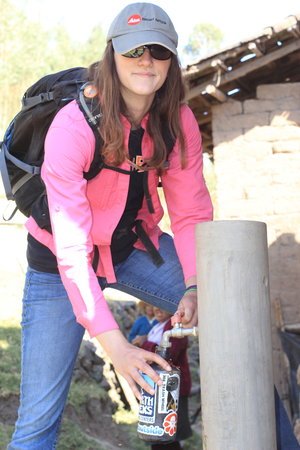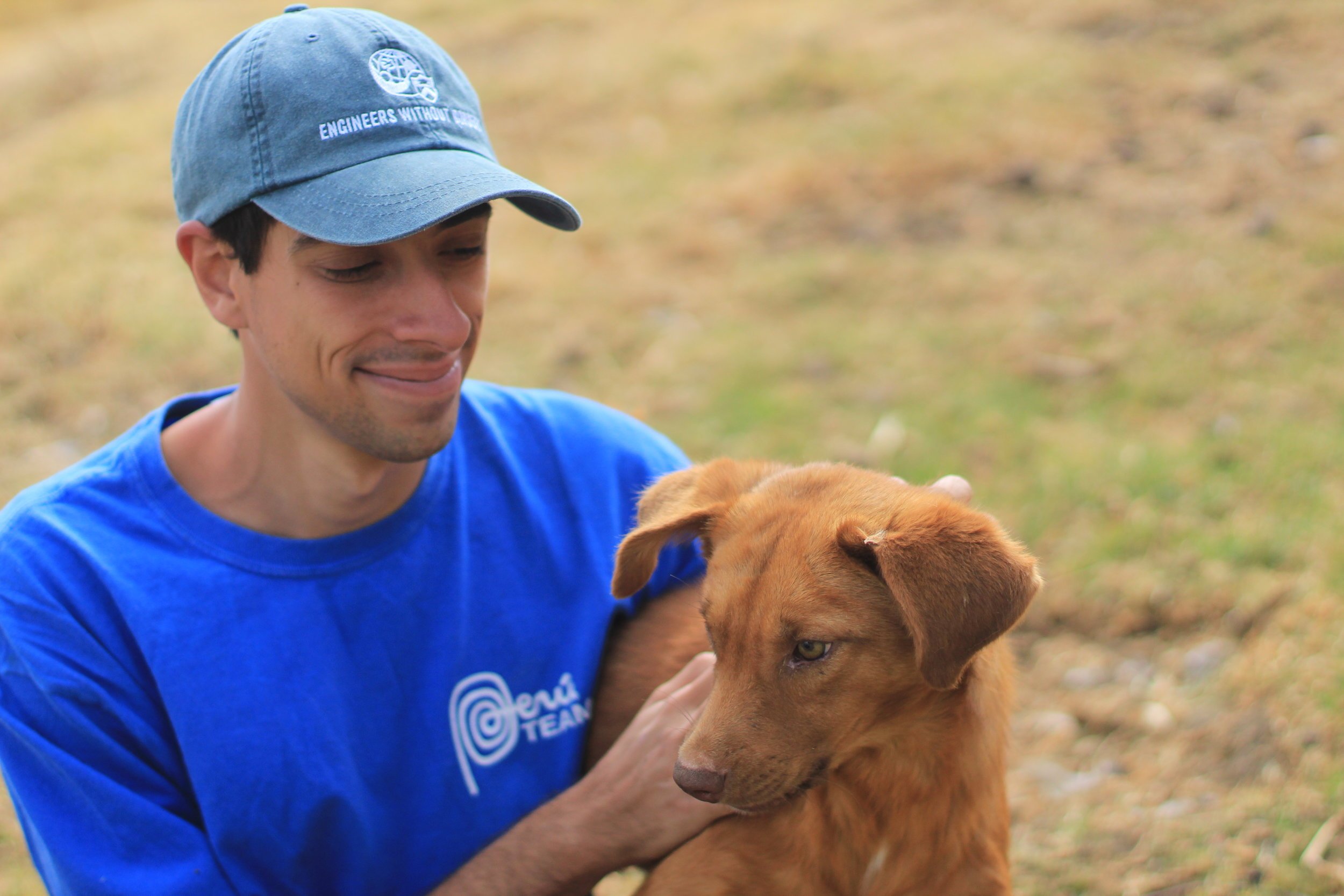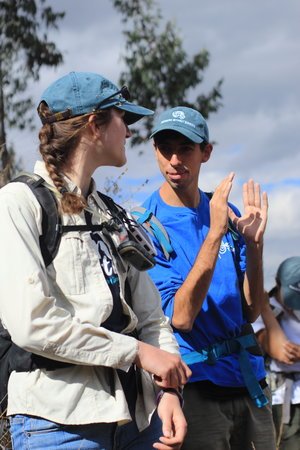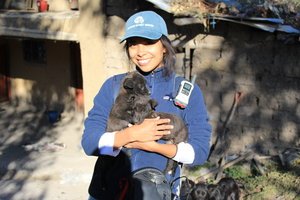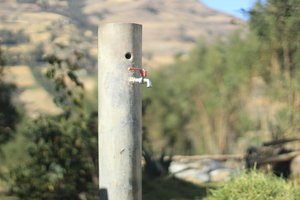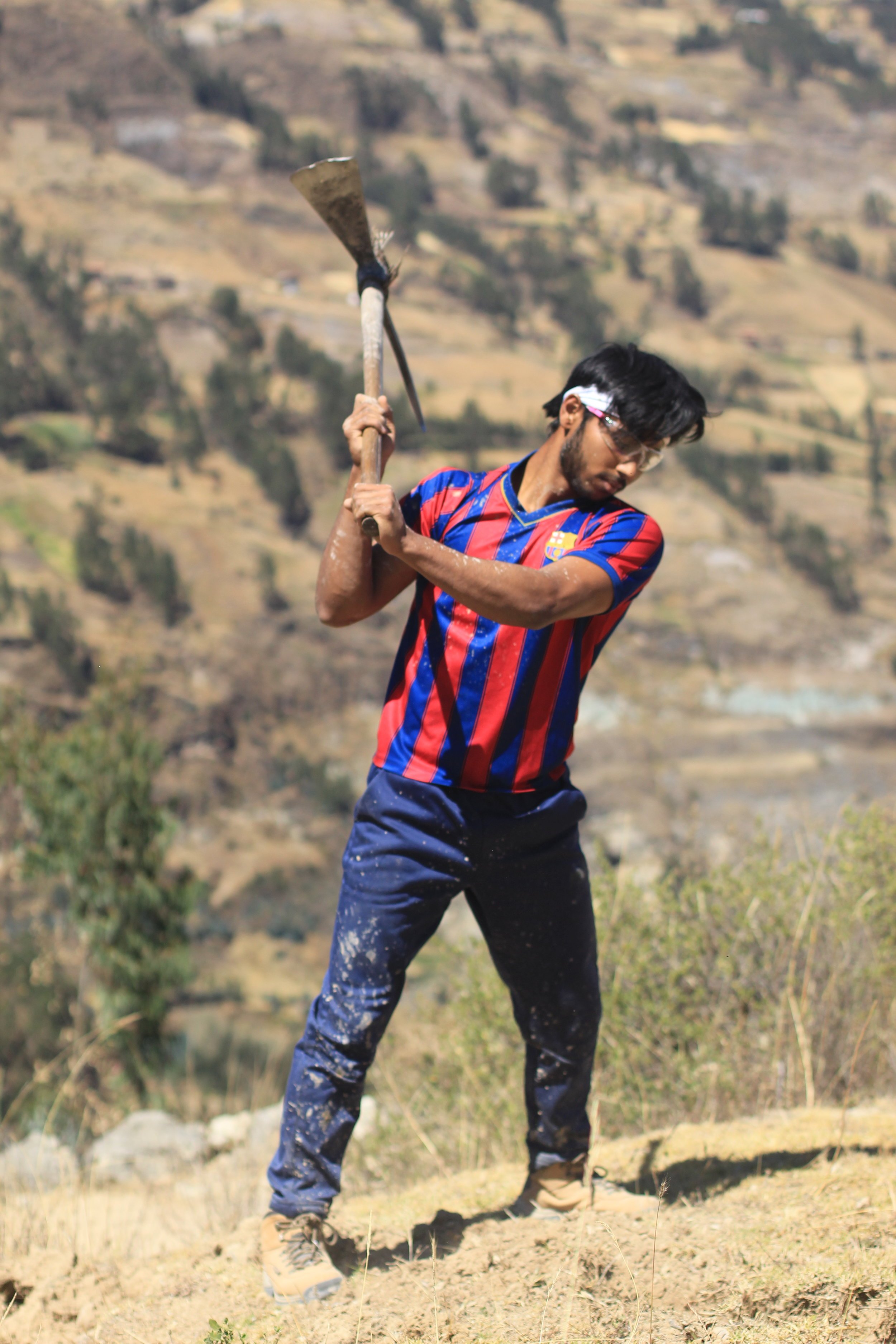A Return to Emoliente
By Claire Wayner and Yulissa Cantero
Most of the travel team gets inaugurated into the emoliente cult on our first full day in Otuzco.
From left to right: Sydney, Kristen, Claire, Riley, Josh, and Pranav.
Weaving through the cobblestone alleys of Otuzco, our home away from home for the next four weeks, Riley and Sydney steered our group to a tiny handcart perched along the curb at a narrow intersection. With glass bottles lined up in neat rows on top of her cart, a woman stood, carefully measuring out various ingredients and straining warm herbal liquids from a metal pot to craft the amazing concoction which we’d ventured 3,300 miles to try: emoliente.
This wasn’t the only reason why our team of seven intrepid engineers had come to Otuzco, but we were certainly excited to take in the sounds, tastes, and smells of the Peruvian food sold by the vendors which line the streets here -- especially the five of us for whom Otuzco was a new stop on our passports. Before we could relax over this well-earned dinner of emoliente and traditional dishes like lomo saltado and pollo a la brasa, the eight members of our travel team -- Riley Wagner and Sydney Hsu (co-project managers who traveled to Otuzco last year); Pranav Iyer, Kristen Ahner, Yulissa Cantero, Linda Pucurimay, and Claire Wayner (the five newbies); and our mentor, Josh Umansky (Princeton class of 2017 and a past PM) -- must spend the next 3 weeks finishing the construction of our gravity-fed water delivery system for the 300 people of Pusunchás, a rural community about 30 minutes outside of Otuzco. The project, started in 2015, is over 90% complete, with 57 tapstands in place so far. All that remains to be done is laying 0.7 more miles of pipe, building the final five tapstands and two pressure breaks, and installing our chlorination filtration system to ensure that the water being delivered from a natural spring is clean enough for drinking.
Yulissa (crouching) prepares to take a flowrate reading at the source capture tank while Pranav (left), Linda (right) and Sydney (rightmost) prepare to time.
This first week, in addition to identifying the houses still in need of tapstands, we have also been surveying all of the houses already in service to ensure that their infrastructure is functioning well. What has proved to be the most difficult part of the process has been navigating the steep landscape of Pusunchás. Stumbling up and down the mountainous slopes through the brambles and omnipresent penca (a cactus-like plant with viciously pointed leaves) in an attempt to follow the quick and confident footing of our local partners has challenged even our seasoned PMs and Outdoor Action certified folks (Pranav and Claire). Despite our gasping for breath at the roughly 3000 meters of elevation, the scenic views we’ve seen have more than made up for the trekking.
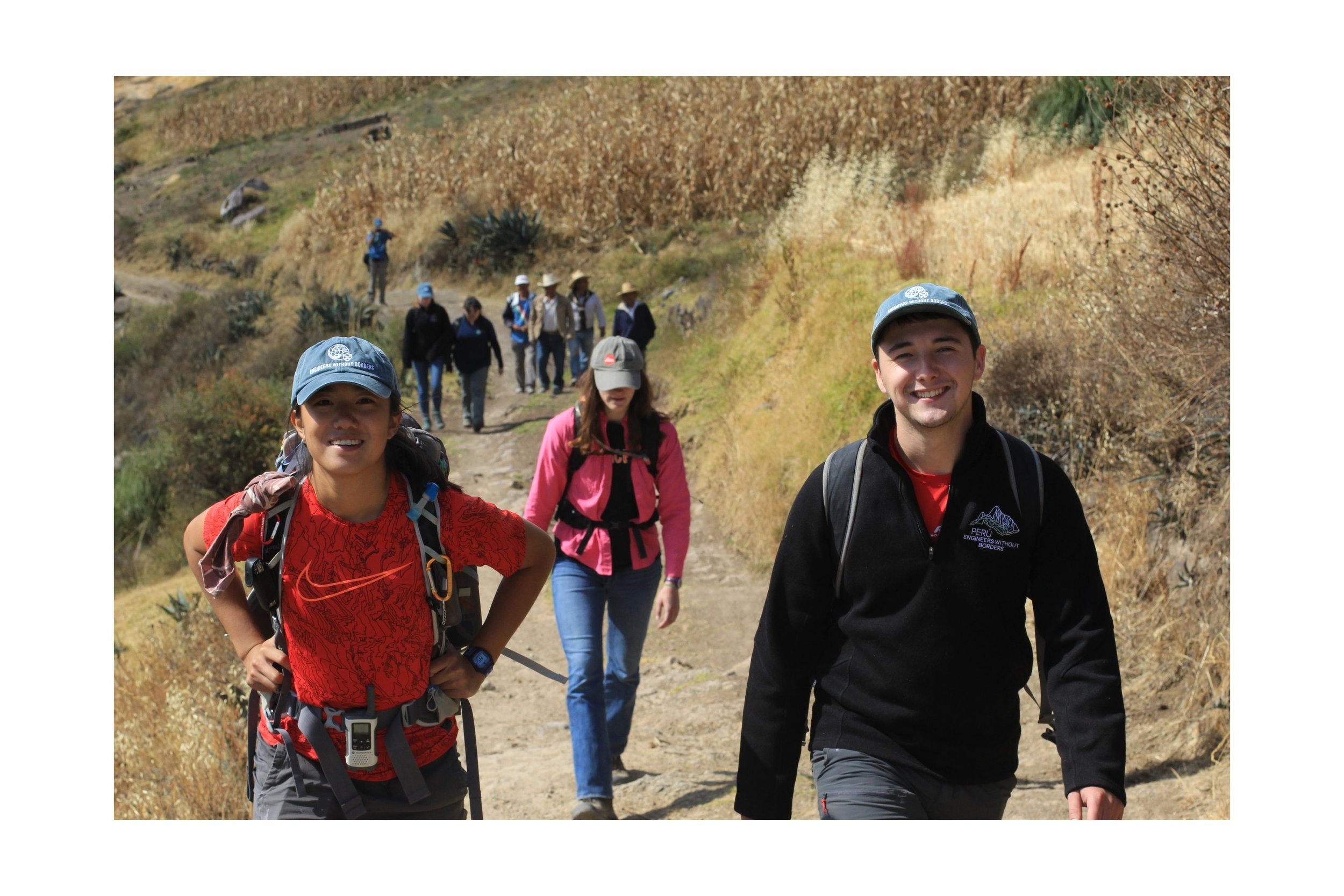

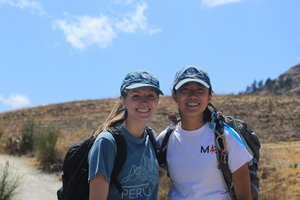
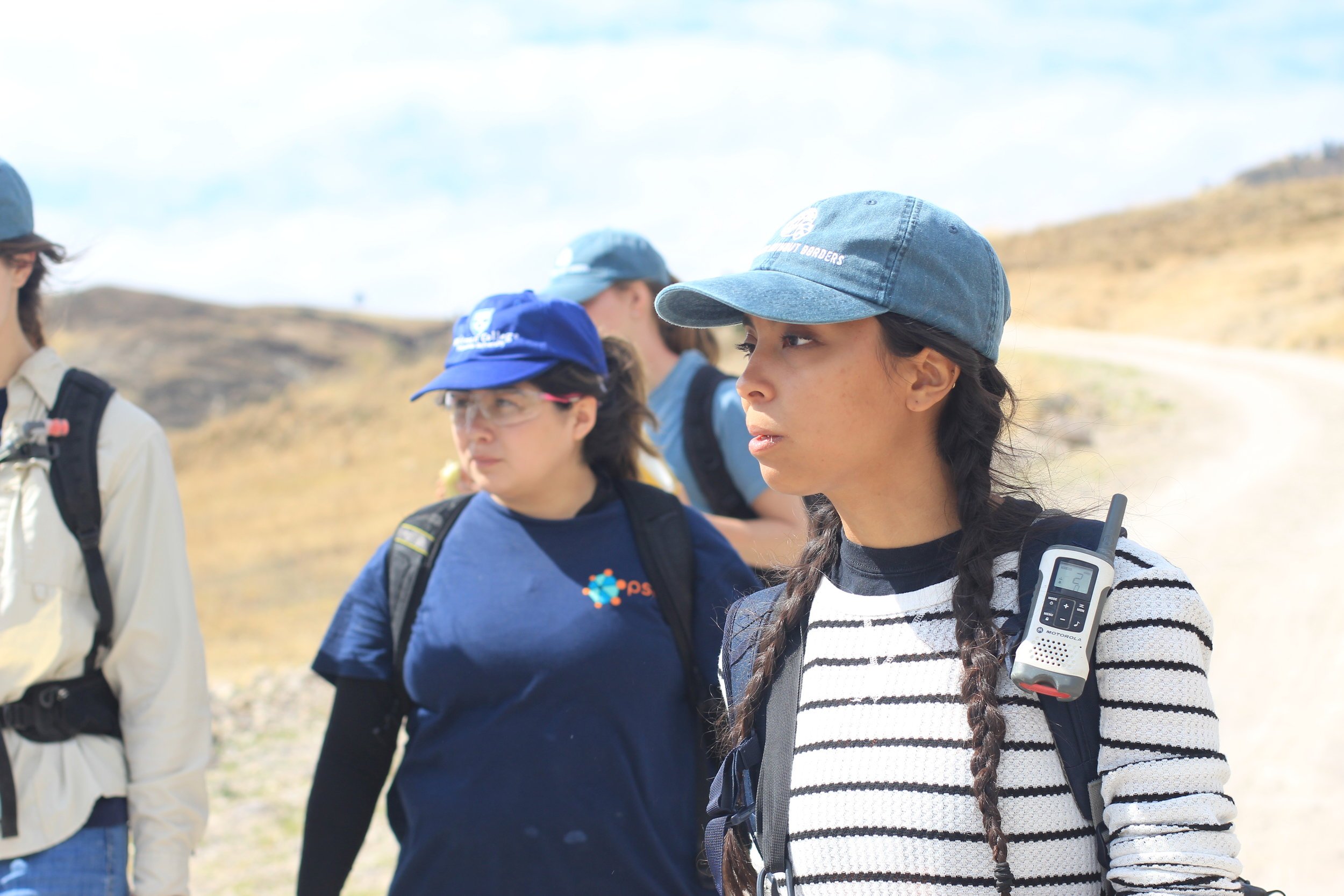
For the installations that need repairs, we’ve submitted requests to our local masonry partner, Tito, and are working with him to make these changes by the time we depart. We’ve also been finalizing the design for the chlorination tank, which will sit next to the system’s main reservoir. While waiting for Tito to begin his work, we’ve taken up the tareas assigned to members of the community wanting to be part of the system, more specifically, digging trenches up to 80 centimeters deep through solid bedrock. Ignoring the aches in our shoulders and the blisters on our hands, we’ve taken countless swings thus far with our pickaxes and shovels with Josh’s infamous saying ringing in our ears -- “It builds character.” Hopefully, we will have enough character built up over the coming weeks to continue to maintain pace with the seemingly inhumane speed and skill of the Pusunchás residents who work beside us.
Pranav takes a swing at a particularly rocky section of pipeline.
For the five of us still unfamiliar with the system, we’ve been learning a lot about the members of the community with whom we partner during construction and implementation. Within Pusunchás, an organizational body called the Junta Administrative de Servicios Sanitarios (JASS) oversees the governance of the water delivery system and manages local disputes. In addition, Julio Avalos, our in-country mentor who used to work with Ingenieros Sin Fronteras (ISF, the Spanish version of EWB), has been incredibly helpful, from driving us to Pusunchás every day from our place of residence in Otuzco (El Centro de Formación de Pastoral Rural) to showing us other ISF projects that have been installed in the region.
Linda (center) and Kristen (right) consult with a community member about her tapstand.
Another critical partner thus far has been Las Marianistas for which Julio works. This nonprofit both runs El Centro (where we are staying in Otuzco) and also sponsors a school in Lima, El Colegio Santa Maria Marianistas, where we stayed the first night. While there, we presented our project to several students, who will be continuing to work with us on our water project this coming school year as part of their student group, Working for a Smile.
We’re thrilled to see the Pusunchás water system to completion, and over the next few weeks, we will keep posting updates about our progress. Thank you to all of our funders, especially the Princeton Environmental Institute and the Keller Center for Innovation in Engineering Education. Peace, love, and lots of emoliente.
